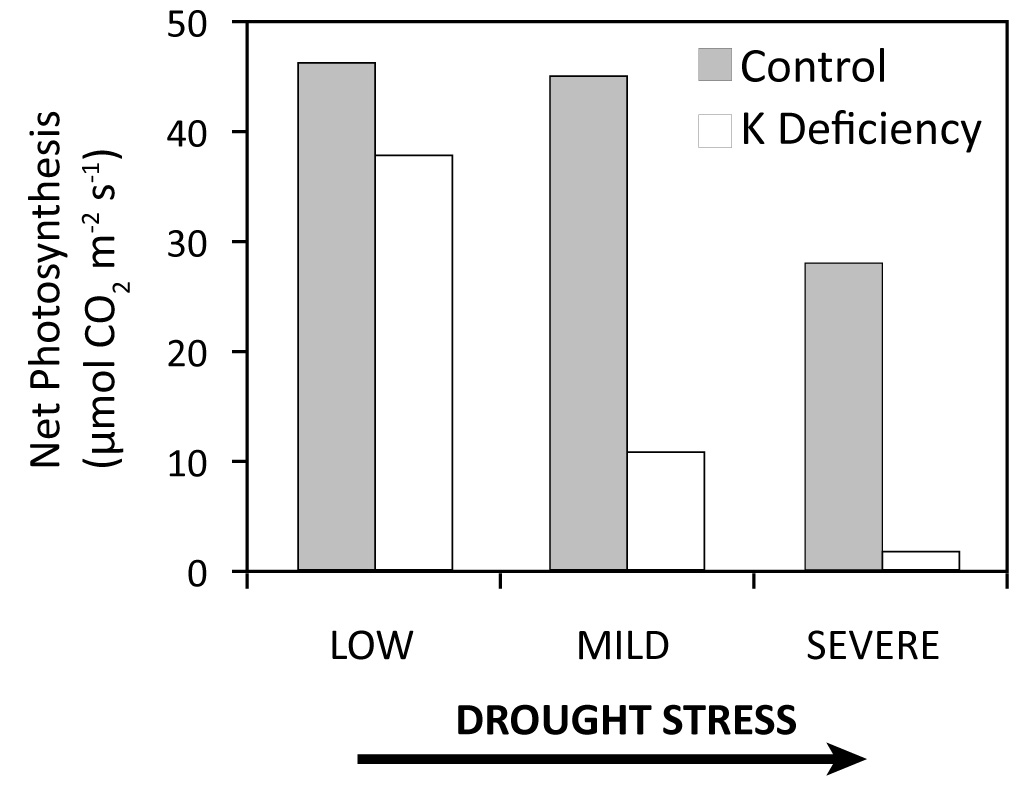Crop stress responses
May 2020
It was by no means inevitable that the unprecedented levels of rainfall over the autumn and winter would end with a drought, however I’m sure many could see it coming. It has been stressed many times about the importance of potassium in crops suffering from drought stress, and each spring appears to provide a reminder of this.
Photosynthesis is the process by which plants capture light energy to convert carbon dioxide and water into carbohydrates, such as sugars, required for growth and building yield. The rate of photosynthesis therefore dictates the efficiency of the production of sugars and ultimately crop yield and quality. Plants subjected to stresses, such as moisture stress, considerably reduce photosynthetic rates, reducing the efficiency of carbohydrate production resulting in lower yield. Photosynthetic rates are maintained in potassium sufficient plants through efficient stomatal activity. Potassium is required by plants to regulate the opening and closing of the stomata (tiny apertures on the underside of leaves) surrounded by guard cells.
The stomata are important for allowing the movement of carbon dioxide into the plant, whilst releasing oxygen. The plant regulates the opening and closing of the stomata through movement of potassium into or out of the guard cells. When potassium moves into these cells, they accumulate water as a result of their higher salt concentrations (through osmosis) and therefore swell, opening the pores. If potassium levels within the plant are low, the stomata become slow to respond and do not close as quickly, resulting in the loss of water vapour and a reduced photosynthetic rate.
By-products of photosynthesis are Reactive Oxygen Species (ROS), such as hydrogen peroxide, that are highly toxic and cause damage to the plant through chlorophyll degradation, leaf chlorosis and necrosis. These ROS are usually removed from plant cells by antioxidants and antioxidative enzymes, however, their production can be particularly high when plants are exposed to environmental stresses such as drought. Potassium deficient plants suffering from drought stress are therefore more susceptible to ROS damage.
High light intensity combined with drought stress can further exacerbate the problem causing very rapid leaf chlorosis and necrosis. Plants suffering from potassium deficiency are therefore also extremely sensitive to increased light intensity.
The graph below shows the net photosynthesis of wheat leaves subjected to varied drought stress and potassium supply (Gupta et al., 1989).


